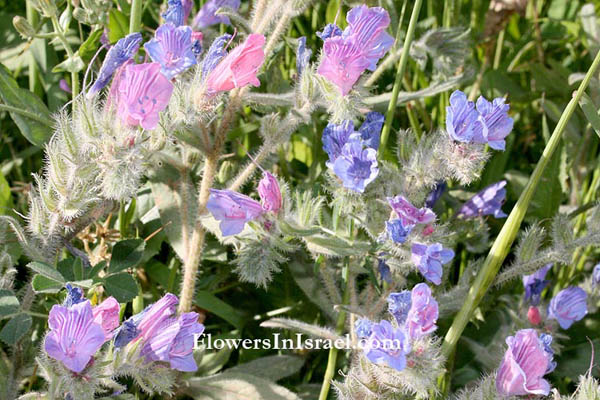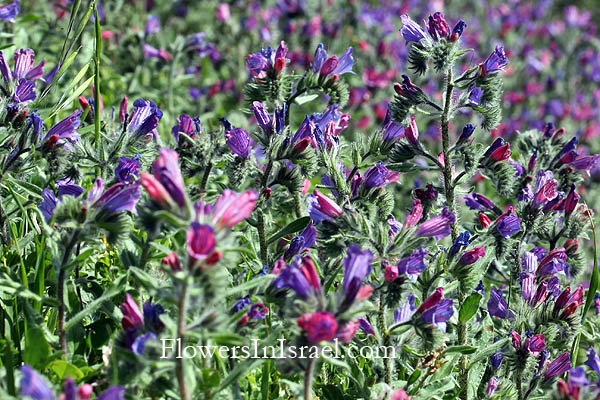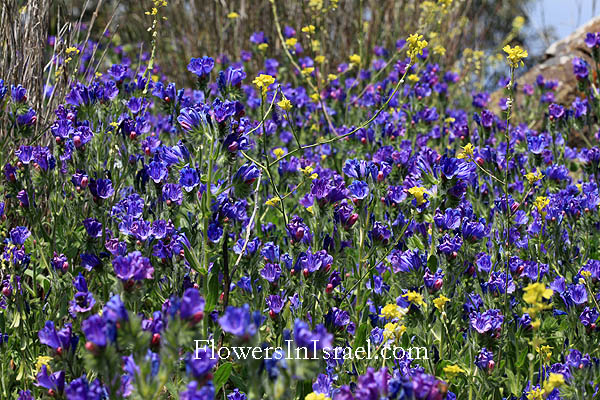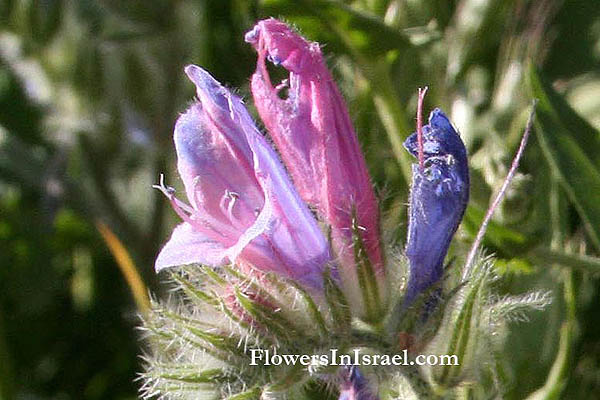Hebrew: עכנאי יהודה, Arabic: ححمحم الغور
| Scientific name: | Echium judaeum Lacaita | |
| Common name: | Judean Viper's-bugloss | |
| Hebrew name: | עכנאי יהודה | |
| Arabic name: | ححمحم الغور | |
| Family: | Boraginaceae, זיפניים |

|
| Life form: | Therophyte, annual | |
| Stems: | Erect, branching at the top | |
| Leaves: | Alternate, entire | |
| Flowers: | Blue, violet | |
| Fruits / pods: | Nutlike fruit | |
| Flowering Period: | March, April | |
| Habitat: | Batha, Phrygana, Shrub-steppes, Desert | |
| Distribution: | Mediterranean Woodlands and Shrublands, Semi-steppe shrublands, Shrub-steppes, Deserts and extreme deserts | |
| Chorotype: | Mediterranean | |
| Summer shedding: | Ephemeral |

Derivation of the botanical name: Echium, echis, "a viper," the nutlets appearing to represent a viper's head. judaeum from Latin Judaeum, from Greek Ioudaios, from Aramaic jehudhai (Heb. y'hudi "Jew," from Y'hudah "Judah," lit. "celebrated," name of Jacob's fourth son and of the tribe descended from him; Jew. Bugloss(Greek origin), means ox tongue, apparently because of the roughness of the leaves. The hebrew word עכנאי, akhnai, by the foreign name echium, derived from echis, a viper.



|